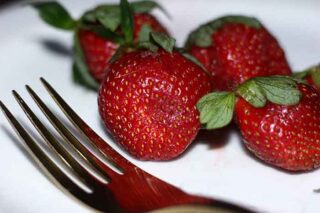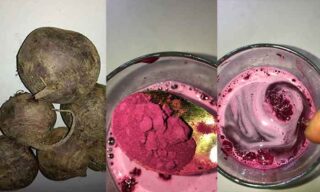Managing blood pressure through diet is an effective way to maintain cardiovascular health. Certain foods are particularly beneficial due to their nutrient profiles, which can help reduce blood pressure naturally. Here are six of the best foods to include in your diet for lowering blood pressure:
1. Leafy Greens
Leafy greens like spinach, kale, and Swiss chard are high in potassium, which helps the kidneys remove more sodium through urine.
This process lowers blood pressure. These vegetables are also rich in magnesium, which helps regulate blood flow and pressure.
You see, nitric oxide is a signaling molecule that helps relax your blood vessels.
Interestingly, magnesium plays a role in increasing the production of nitric oxide.
A study says says preliminary evidence suggests that insulin sensitivity, hyperglycemia, diabetes mellitus, left ventricular hypertrophy, and dyslipidemia may be improved with increased magnesium intake (1).
How to Include:
- Add to salads, smoothies, or soups.
- Sauté with garlic and olive oil for a healthy side dish.
2. Berries For Lowering Blood Pressure

Berries, especially blueberries, strawberries, and raspberries, are rich in flavonoids.
Flavonoids are natural compounds that have been shown to lower blood pressure and improve overall heart health.
Also, a study reports that that catechins and quercetin (flavonoids) impart significant blood pressure lowering effects.
It says mechanistically, flavonoids mediate their antihypertensive effects through increasing nitric oxide (2).
How to Include:
- Add to your morning oatmeal or yogurt.
- Enjoy as a snack or in a fruit salad.
3. Oats
Oats are high in soluble fiber, particularly beta-glucan, which can help reduce blood pressure by improving cholesterol levels and promoting heart health.
Consuming oats can lead to a significant reduction in both systolic and diastolic blood pressure (3).
How to Include:
- Have a bowl of oatmeal for breakfast.
- Use oat flour in baking or as a thickener in soups and stews.
4. Beets

Beets are rich in nitrates, which the body converts into nitric oxide. Interestingly, it can come in raw of powder form.
As stated earlier, nitric oxide helps relax and widen blood vessels, improving blood flow and reducing blood pressure.
Studies have shown that drinking beet juice can lead to a significant decrease in blood pressure.
One study highlights that the presence of the nitric oxide makes beat juice effective in lowering blood pressure (4).
How to Include:
- Drink fresh beet juice.
- Roast or steam beets and add them to salads or smoothies.
5. Fatty Fish
Fatty fish like salmon, mackerel, and sardines are excellent sources of omega-3 fatty acids.
Omega-3s can lower blood pressure, reduce inflammation, and decrease triglycerides.
These healthy fats also improve overall cardiovascular health.
How to Include:
- Grill, bake, or broil fatty fish for dinner.
- Add to salads, sandwiches, or pasta dishes.
6. Garlic
Garlic contains allicin, a compound that has been shown to reduce blood pressure by promoting the dilation of blood vessels.
Basically, allicin prevents the production of angiotensin II, which is a compound responsible for increasing blood pressure. This compound causes your blood vessels to tighten up or contract, lowering proper blood flow (5).
Therefore, regular consumption of garlic can help lower systolic and diastolic blood pressure.
How to Include:
- Use fresh garlic in cooking for flavor and health benefits.
- Consider garlic supplements if you don’t enjoy the taste.
Additional Tips For A Blood Pressure-Friendly Diet
- Reduce Sodium Intake: Limit the amount of salt you add to your food and avoid high-sodium processed foods.
- Increase Potassium Intake: Foods like bananas, sweet potatoes, and avocados are rich in potassium, which helps counteract the effects of sodium.
- Eat Whole Grains: Whole grains like brown rice, red rice, quinoa, and whole wheat bread are good for heart health.
- Limit Alcohol and Caffeine: Excessive consumption can raise blood pressure.
- Stay Hydrated: Drinking enough water helps maintain proper blood pressure levels.
Incorporating these foods into your diet can help in lowering high blood pressure naturally for persons with this condition.
Related Articles
Combined with regular exercise, maintaining a healthy weight, and managing stress, these dietary changes can significantly improve your cardiovascular health.
Always consult with a healthcare provider before making significant changes to your diet or lifestyle, especially if you have existing health conditions or are taking medication.


